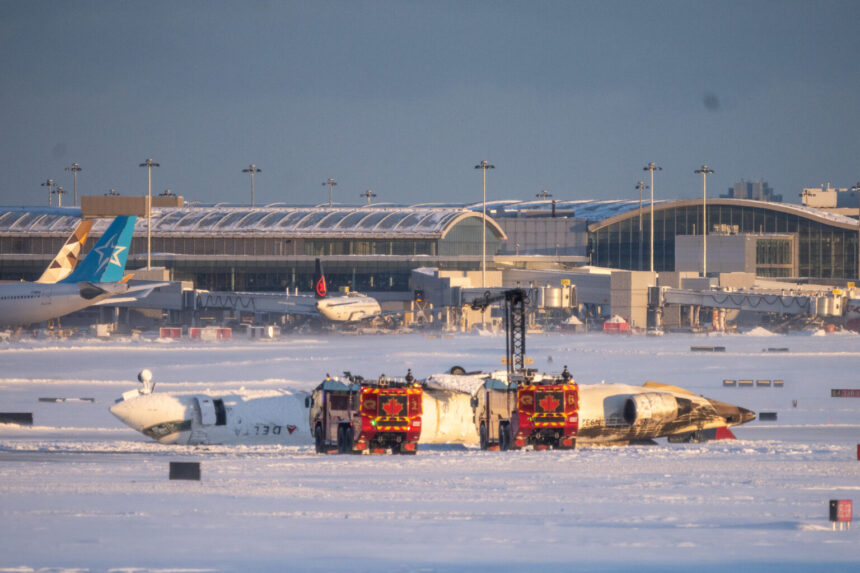Severe Weather Conditions Lead to Delta Airlines Crash Landing
A Delta Air Lines regional jet flipped upside down after landing at Toronto-Pearson International Airport on Monday, resulting in injuries to 15 passengers, including three critically. The Bombardier CRJ900, operated by Endeavor Air, lost its tail and one wing before coming to rest on its roof amid freezing, windy conditions.
Eyewitness Accounts: A Routine Landing Turns to Chaos
Passengers described the landing as sudden and violent. Social media footage showed the aircraft slamming into the tarmac, engulfed in smoke and flames.
“It was just super hard, like a hit on the ground, and the plane went sideways,” said passenger John Nelson.
Nelson and other passengers found themselves suspended upside down, still strapped in their seats, before evacuating as jet fuel fumes filled the cabin. Emergency personnel were already waiting to assist survivors.
Weather Conditions and Investigation
At the time of the crash, winds were blowing at 28 knots (32 mph) with gusts up to 35 knots, alongside blowing snow and low visibility. The US National Transportation Safety Board is assisting Canadian authorities in the investigation.
Ongoing Air Safety Concerns
The incident adds to a series of recent air disasters in North America, including:
- A commuter plane crash in Alaska earlier this month, killing 10.
- A mid-air collision near Washington, D.C., in January, claiming 67 lives.
- A medevac plane crash in Philadelphia days later, killing seven.
Toronto Pearson Airport temporarily closed following the crash, with flights being diverted.
Delta’s Response
Delta CEO Ed Bastian expressed support for those affected:
“The hearts of the entire global Delta family are with those impacted. We thank our team members and first responders on-site.”
While no fatalities occurred, the crash underscores the challenges of winter aviation safety.









